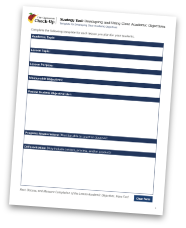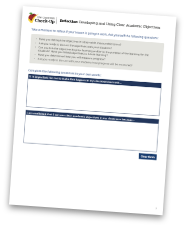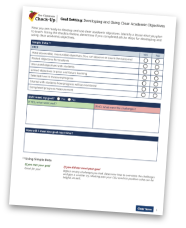Strategy: Developing and Using Clear Academic Objectives
Check-Up Menu > Developing and Using Clear Academic Objectives
How To
How to Use Clear Academic Objectives in Your Classroom
Begin by developing observable and measurable academic objectives for the lesson you plan to teach if this has not already been done within the curriculum.
Next, assess your students’ current skill levels to determine if objectives are appropriate. If necessary, adjust the content, process, or product of the lesson to match student skill levels.
Next, determine how you will measure progress and completion of academic objectives. Be sure to post and discuss the objectives, telling students how you will measure their progress toward meeting the objectives. When possible, engage the students in recording their own progress.
Reviewing Writing Assignment
Video Prompts:
- Notice how she asks both individual questions and gets the attention of the room by saying, “I am looking for my active listener.“
- She tells them what book she will be reading, “Seeds to Plants,” when they return from lunch.
- Notice how she describes what the students will be required to do on the handout. She engages the class by asking questions along the way.
- What did you like about how the teacher explained the objectives of the handout?
- How do you think the students in that class are feeling?
- How might you incorporate some of what you saw and liked about how she explained the lesson in your classroom?
What if your curricula does not include clear measurable objectives? How do you write them?
Non-examples:
- Students will complete an electricity experiment.
- Students will become aware of an ancient writing system.
- Students will understand how to sequence story events.
Examples:
- Students will light a bulb using wire, a battery, and a bulb.
- Students will translate their names and common words from English into hieroglyphics, and vice versa.
- Students will correctly sequence five events from a story with five sentence strips.
The student currently reads 25 words correctly on the ABC sight word list. As the teacher, you would next determine what an appropriate rate of progress should be for the individual student. If progress on the ABC sight word list is going to be measured weekly, depending on the amount of instructional time given for this objective and the individual student, it may be appropriate to set a goal of five additional words per week.
- Objective: The student currently sequences two or fewer out of five story events on four of five attempts. As the teacher, you would need to determine what an appropriate goal would be for the individual student and a realistic amount of time depending on instructional time devoted to this objective. It may be appropriate to set a goal of five out of five stories correctly sequenced on four out of five attempts at the end of a three-month period.
Another example of measuring a goal over a period of time, rather than just for a daily lesson, might include having you determine the student’s current level and then sequencing the lesson objectives for an entire week or over several weeks.
- Objective: The student currently sequences two or fewer out of five story events on four of five attempts. As the teacher, you would need to determine what an appropriate goal would be for the individual student and a realistic amount of time depending on instructional time devoted to this objective. It may be appropriate to set a goal of five out of five stories correctly sequenced on four out of five attempts at the end of a three-month period.
Strategy Tool

Reflection

Goal Setting

References to Other Relevant Resources:
Bateman, B., Herr, C. (2006). Writing measurable IEP goals and objectives. Verona, WI: Attainment Company, Inc.
Tomlinson, Carol Ann. (2006). The differentiated classroom: Responding to the needs of all learners. Alexandria, VA: ASCD


